Recently, the phenomenon of corn ear development has appeared in the summer maize parts of Dezhou, Shouguang and Qufu in Shandong. According to the management of the agricultural wealth, this abnormal phenomenon has also occurred in Henan, Hebei, Anhui, Liaoning, Heilongjiang, Shanxi and many other places.

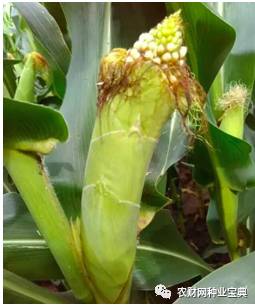
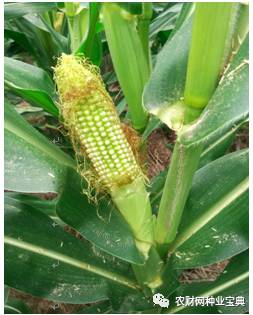

The Shandong Provincial Department of Agriculture has issued an urgent notice on the 24th!
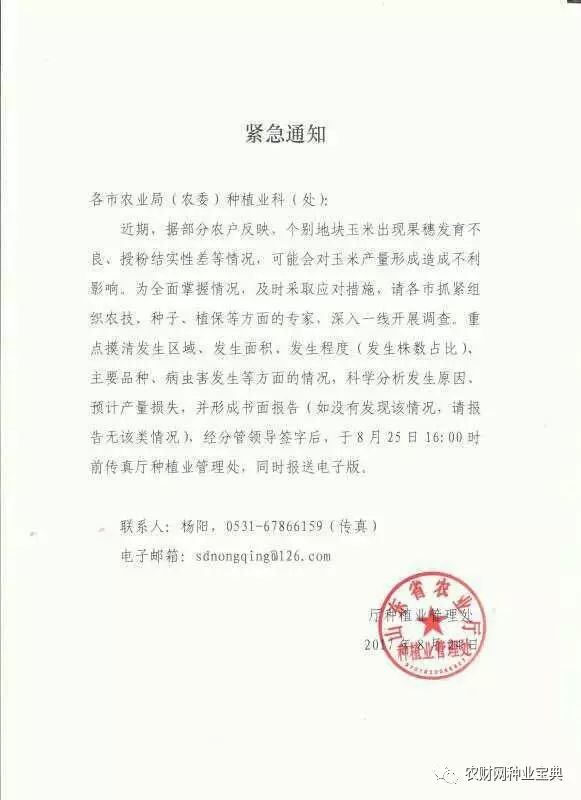
Guidance has been issued in various places:
Jiyang County Agricultural Bureau
Notice on the technical opinions on the issue of "corn stems and flowers and the countermeasures" (click on the image to enlarge the details)

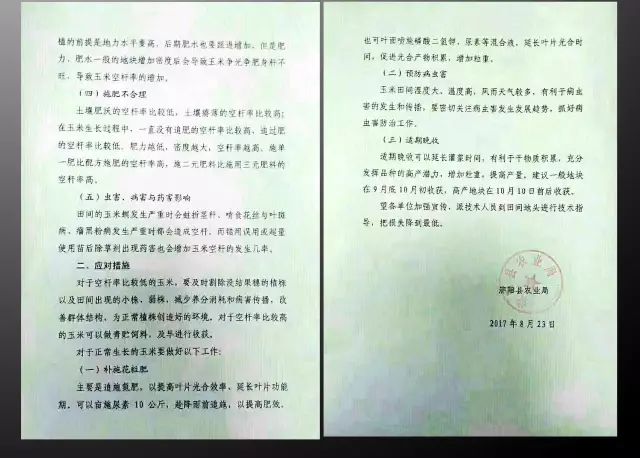
Zouping County Agricultural Bureau
Urgent Notice on "Maize Herma Development" (Click on the image to enlarge the details)

Shouguang City Agriculture Bureau
This year, the summer corn in our city has different degrees of ear deformity, bare top (short leaf), lack of grain, bald tip, empty pole, and long stems and leaves. After investigation, the towns (streets) of Shangkou, Gucheng, Tianliu, Houzhen, Luocheng, Taitou, Hualong and Sunji have occurred to varying degrees.
Lingcheng District Agriculture and Forestry Bureau
More and more farmers in our district have reported that there are some varieties of summer corn planted this year (Denghai 605, Denghai 618, Denghai 3737, Zhongkeyu 505, Lianchuang 808, etc.). The main reason is the abnormal drought during the jointing period, the extreme high temperature of 37 degrees above the trumpet period, and the rainy and sloppy period of the loosening powder.
What the hell is going on? Let’s listen to what the experts say:
What is the cause of corn ear deformity?
Dezhou: How many corns are not long-formed?
"The situation is extremely grim! How to prevent it? How to remedy? The peasant peasant extensively collected the guidance materials related to the ear malformation, and compiled the following contents. Farmers and friends can have a look!
First, the field performance symptoms
The abnormalities of the ears (female) vary from place to place. The main manifestations are empty rods. The leaves are short and the leaves are short (the loquat leaves account for 1/5 to 4/5 of the length of the ears, the loquat leaves can not wrap the ears), and the ears are not deformed. normal phenomenon.
Ear deformities mainly include:
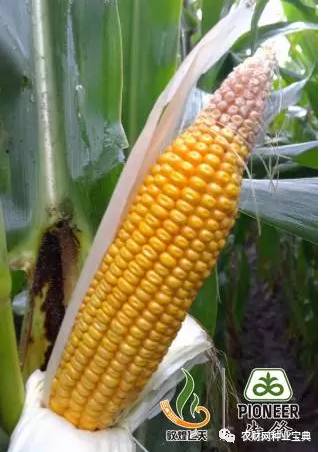
Bald
Symptoms: There is little or no grain at the tip of the ear 3-5 cm. Cause: The grain is affected by environmental stress in the early stage of development, including: severe drought and high temperature, nitrogen deficiency, leaf disease and cloudy weather.
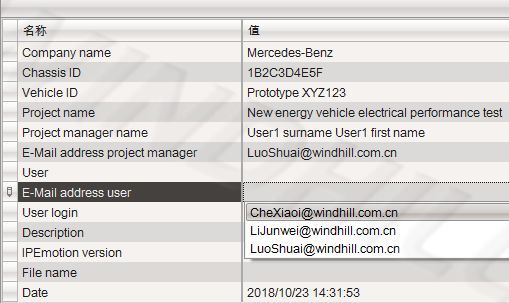
Grain not grouted
Symptoms: Some corn kernels are an empty shell with only the epidermis.
Reason: The high temperature and drought during pollination lead to incomplete fertilization, only the normal fertilization of the embryo is completed, and the endosperm is not fertilized.

Missing
Symptoms: There are few kernels, and only a few kernels complete pollination. In severe cases, the ears have only scattered or insignificant grain distribution. Cause: The filaments are blocked due to drought and high temperature, and the pollen falls off, resulting in poor pollination of the ears. Insufficient supply of pollen due to uneven crop growth, herbicide phytotoxicity, insect bite and filament damage. Phosphorus deficiency also affects pollination.

Twisted ear
Symptoms: The number of rows of ears is reduced by half (possibly only 7-8 rows), but the length of the ears is normal. Reason: 7-10 leaves are caused by external pressure, and the ears of corn are paired to form the number of ear rows. If during this period, the whole plant is sprayed with a lactic acid synthesis inhibitor or a sulfonylurea herbicide (nisnisulfuron). ), especially when mixed with organophosphorus pesticides, will disturb the differentiation of panicles and lead to the lack of differentiation of ear rows.

Blunt ear syndrome
Symptoms: The size of the ear and the number of grains per row were significantly reduced. The length of the temporal lobe and the number of ear rows were normal. Sometimes the number of spikes on one stem section increased, and it was rare or sporadic in the field. Reason: During the formation of the ear (8-12 leaves), the cell division tissue of the ear is damaged, such as insect bites, drought, low temperature or lack of nutrients, which inhibits the longitudinal elongation.

Drought ear
Symptoms: There are fewer spikes, especially the tip of the ear, which reduces the number of kernels and reduces the number of rows and the number of rows. Reason: The mid-nutrient growth period is affected by severe drought in the middle of grain filling. In addition, nitrogen deficiency and high density can also cause such ears.
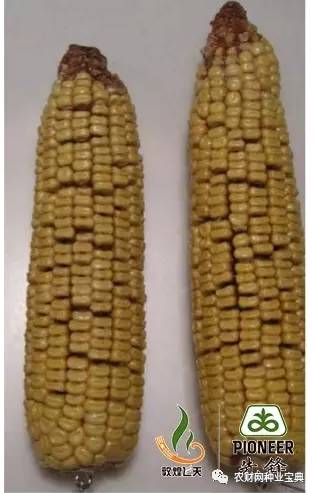
Dried sorghum
Symptoms: Due to the dryness of the seeds, the seeds are not full, and there are obvious gaps between the grains. Reasons: wax ripening - ripening period, severe stress (photosynthetic pressure), including: freezing damage and premature aging, premature aging mainly due to drought, high density, leaf disease, potassium deficiency and hail.

Zipper spike
Symptoms: Loss of whole grains due to abortion. Some ears are bent (like bananas) due to different grain arrangements. Cause: Usually associated with severe drought or leaf damage after pollination.
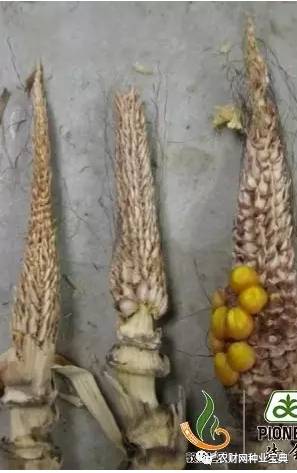
Stagnation ear, empty spike
Symptoms: The base of the ear is normally developed and has sparse grain, but the development from the top to the tip of the ear stops early, and there is almost no grain. Reason: Spraying large doses of nonionic surfactants (such as silicones, emulsifiers, etc.) during the 12-14th stretch of leaves before corn is squished, causing obstacles in the developing ear cells.

Grain red line
Symptom: Red lines are distributed on both sides of the grain and extend to the top. It is usually more common at the top of the ear. Reason: If you encounter low temperature environment in the later stage of pollination, it is easy to appear; warm light reaction, there are differences between varieties.

Ear rot
Symptoms: White, red or green Pythium appears between the seeds of some or all of the ears. The infection usually develops from the bottom of the ear to the tip of the ear, and infects the entire loquat leaf and grain. The whole ear shrinks and the infected grain sticks to the loquat leaf. The susceptibility of different varieties is different. Cause: The pathogen invades the filament with airflow and rain, and the filament enters the interior of the ear; the corn insect pest causes the wound to invade the disease.

Spike
Symptoms: When the corn is not harvested, the kernel begins to sprout and is often accompanied by ear rot. Reason: The varieties of eucalyptus leaves are tight and short, and the rain is relatively large in the later stage, infiltrating into the ears, high temperature and high humidity are suitable for grain germination; partial application of nitrogen fertilizer.

Tassel
Symptoms: The ear grows on the tassel. Cause: When the growth point of the tiller is damaged, or the hail, frost, flood, herbicide, mechanical damage, etc., the male ear can be formed. Under certain environmental conditions, some species are more prone to tillering, the chance of forming male ears is increased, and the male ear is more likely to form on the ground, which is also related to the ground compaction and saturated soil.
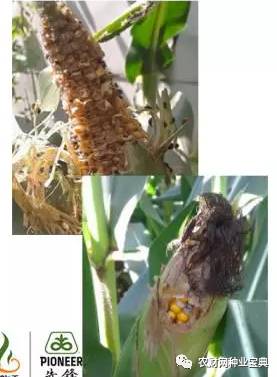
Ears are affected by insects (birds)
Symptoms: All or part of the grain is destroyed, and the mold often has mold growth, accompanied by spikes.
Cause: The grain is bitten by the pest, usually in a certain part of the ear. The worm enters the ear from the top through the stalk, and some of the damaged grain is infested by the mold later. Rainwater accumulates at the bottom of the ear, causing ear rot or ear sprouting.
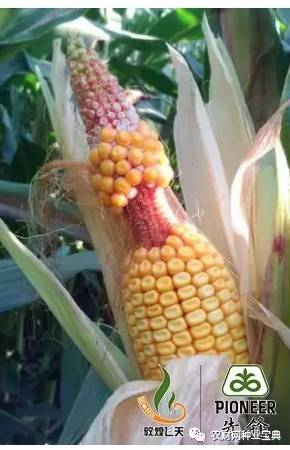
Barbell spike
Symptoms: The base and apex of the ear of corn are normally developed, and the central part is abnormally developed with no grain.
Reason: This species is likely to occur when there is a low temperature in the ear formation stage of the cultivar with the sweet corn genetics.
Multiple ear syndrome
Symptoms: A typical feature is the emergence of many ears on a stalk. Sometimes there are 5-6 ears, similar to a bouquet.
Reason: This ear is most likely due to late flowering or lack of pollen. Dr. Bob Nielsen of Purdue University in the United States found that when the filaments on the ears were bitten by the pests, the amount of pollen that could be received was greatly reduced, and severe clusters of spikes appeared. Therefore, it is necessary to control the panicle pests.
Palm of the hand
Symptoms: The top of the ear is flat, and several ears are also separated from the middle of the ear, just like the claws.
Reason: On hybrids with a sweet corn gene, once the low temperature barrier is encountered during the ear formation period, the chance of such a spike is large.
Second, the influencing factors
Agricultural production is like an open-air factory. Crop growth is affected by various factors such as light, warm water and gas fertilizer. Different sowing dates of the same variety have different conditions due to different climatic and meteorological conditions. Different varieties have different seedlings due to growth period, resulting in ear differentiation and pollination. There are also differences in the different conditions of the silk period.
In general, the causes of corn ear malformation and short leaf stalks are related to meteorological conditions such as high temperature and drought in the early growth stage of corn, high temperature and high humidity in the middle and late stages, and the sowing time, planting density, planting variety and application of chemical control agents. There is also a big relationship.
(1) Meteorological conditions
The stage of maize ear differentiation coincides with high temperature and dry weather. The stage of maize ear differentiation is mainly from the jointing stage of maize to the small trumpet stage. The suitable temperature for ear differentiation is 25 °C. Too high or too low will affect the differentiation of maize ears, resulting in "female malformation and short leaves." , empty poles and other phenomena. (from the jointing stage of the corn to the small trumpet), the high temperature and dry weather above 35° will inhibit the development and elongation of the subsequent leaf primordia, resulting in short deformity of the leaves and exposure of the ears. In addition, when the development of the ear is inhibited by the unfavorable environment such as high temperature and rain, it is prone to abnormal phenomena such as multi-ear, abortion (empty), long leaves, and thick leaves. The sowing time is different, the influence of climate conditions in the development process is different, and the field performance is different. There are few days of high temperature weather or no high temperature in the differentiation of maize ear and small flower. The phenomenon of ear malformation and short leaves is less. On the contrary, the occurrence of ear malformation and excessive temporal lobe is more.
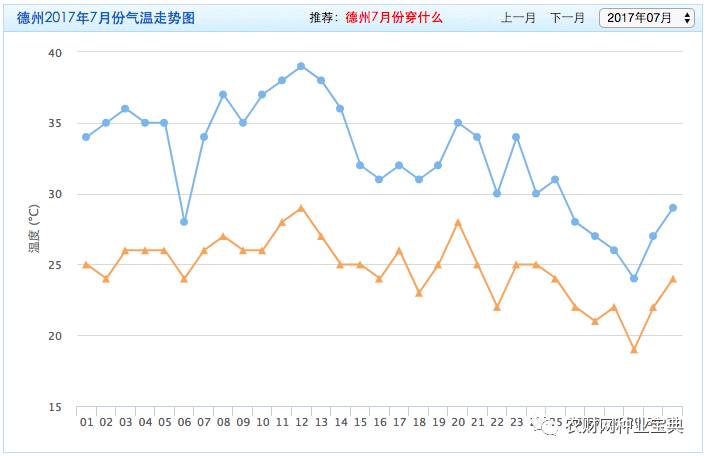
Temperature graph of Texas in July (Source: Weather Network)
(2) Improper cultivation management measures
The management is extensive, or the planting density is too large, resulting in poor ventilation and light transmission in the field, insufficient light, weak photosynthesis of plants, and reduced synthesis of organic matter, which affects the development of the male and female ears of the corn, causing deformities such as baldness and lack of grain. In addition, too early sowing, unreasonable use of fertilizers, also led to abnormal growth of the ear.
The survey found that the same variety showed abnormalities due to different sowing dates, because the high temperature and dry weather were only severe during the spike differentiation period, and the early or late planting of corn ears was too early. The time of differentiation missed this unfavorable period and was rarely affected. For example, in Shouguang City, the plots that were broadcast live in summer from June 10 to June 15 were heavy, and those that were planted later than June 18 did not occur. It was also found that different varieties were sown at the same time, and some varieties were affected more heavily, and some varieties were less affected. The reason was that although they were planted at the same time, due to the different growth and development processes of different varieties, the internal development of different varieties was caused. The period was inconsistent, and it just happened to cater to the varieties of that period.
(3) Soil, nutrition and fertilizer
The sandy soil has higher salinity, low sorghum and easy sorghum, shallow tillage layer, poor water storage and fertilizer retention capacity, and thin soil, and the deformed ear is heavier.
When fertility is applied, the application of nitrogen, phosphorus and potassium is improper, no application or less application of organic fertilizer and micro-fertilizer, especially the deficiency of phosphorus and boron fertilizer in the soil; or the middle and late growth stage of maize, the water supply is insufficient, especially the lack of water in the flowering and filling stage of corn. Fertilizer, affecting the manufacture and operation of organic matter, makes corn silking later, reduces pollen in the field, shortens the life of pollen and filament, and causes corn abdomen to lack grain.

(4) Impact of varieties
Different varieties are sensitive to environmental changes. When the adverse external environmental conditions exceed the adaptation range of the varieties, they will affect their normal development. Among them, the corn varieties containing the American bloodline were heavier, while the 958 type varieties were lighter; the white axis varieties were lighter and the red axis varieties were heavier.
(5) Drug influence
Spraying chemical control agents or triazole fungicides at the booting stage of corn. In order to prevent the lodging of corn, the growers sprayed the chemical control agent in the excessive and late (early 13 leaves) of the corn at the booting stage. At this time, the sensitive period of the corn booting on the drug was met, plus high temperature, drought or high humidity. The superposition of bad weather can cause phytotoxicity. Or in order to prevent pests and diseases from excessively spraying triazole fungicides or insecticides sensitive to American varieties during high temperature periods, the abnormal development or development of the leaves and ears may be caused to be asynchronous, which may also cause the ear and the leaves. Abnormal development.
(6) Degree of occurrence of pests and diseases
Corn leaf spot disease and corn seed blight, sheath blight, and stem-based rot can affect the normal growth and development of corn, resulting in poor growth of corn, especially when corn aphids begin to occur in large numbers during corn withdrawal. Corn can not be properly pollinated, resulting in abnormal ear shape, bald tip and lack of grain.

"Since ancient times, weather and climate have been irresistible. Under abnormal climate, water and temperature exceeding the physiological tolerance of corn will affect its normal development and abnormal growth. But one thing should not be ignored, we can take Some measures to reduce the loss!
Third, prevention measures
1
Adjusting the planting structure
It is suggested that 2 to 3 varieties with similar growth periods, small differences in plant height and resistance to complement each other can be combined as a mixed or intercropping of “predominant varieties†to reduce the risk of planting a single variety.
2
Reasonable close planting
Different varieties have their own suitable planting density. Do not blindly increase the density. At the same time, promote the wide and narrow row planting (wide line 80cm, narrow line 40cm) mode. This mode has better ventilation and light transmission in the field, and the light energy utilization rate is higher. It is conducive to the formation of photosynthetic products, increase the nutrition of the ear, and promote the differentiation of the ear, so as to reach the ear, the big, the high yield.
3
Strengthen field management
In addition to rational adjustment of the sowing date, it is necessary to strengthen field management. Watering should be timely in case of drought, so as to avoid abnormal growth caused by excessive drought. At the same time, watering will improve the microclimate in the field to some extent and reduce the high temperature hazard. It is also necessary to apply fertilizer reasonably, increase the application of organic fertilizer, balance the application of nitrogen, phosphorus and potassium fertilizers, and realize the combination of organic and inorganic fertilizers to meet the nutrient requirements of corn growth in different growth stages of corn. With the increase of corn planting density, the amount of chemical fertilizer is also increasing. It is necessary to apply deep fertilizer, increase potassium fertilizer, and move nitrogen fertilizer backward. In addition, in the flowering pollination period, if it is rainy and rainy, try to artificially assist pollination.
4
Pay attention to pests and diseases
In the middle and late stages of corn, it is necessary to timely carry out comprehensive prevention and control of large and small spotted diseases, sheath blight, corn borer, aphids and other pests to ensure the normal growth and development of corn ears.
5
Diseased plants: timely removal of diseased plants or early harvesting
Farmers' friends should find the diseased plants in time, and the corn plants with less plant rate should be removed in time to facilitate the growth of other healthy plants and reduce losses; the corn fields with heavier plantage should be harvested early, as silage. raw material.
At Aquaspring, we take pride in crafting exquisite hot tubs, and our 4-Person Hot Tub is no exception. Designed to create the perfect retreat for you and your loved ones, this spa is the epitome of luxury, relaxation, and togetherness.
Our 4-Person Hot Tub strikes the perfect balance between spaciousness and intimacy. With ample seating for four, it's an ideal choice for families, couples, or small gatherings with friends. The cozy seating arrangement ensures that everyone can enjoy the soothing hydrotherapy and immersive experience. Immerse yourself in a world of tranquility as the powerful jets gently massage your body, melting away the stresses of the day. With customizable settings, you can tailor the hydrotherapy experience to suit your preferences, providing relief to sore muscles and promoting overall well-being.
Crafted with precision and premium materials, our 4-Person Hot Tub is built to last. The sturdy construction ensures years of enjoyment without compromising on performance. The sleek and elegant design adds a touch of sophistication to any outdoor or indoor space. Its aesthetic appeal complements various styles, making it a seamless addition to your home or backyard. Additionally, we have streamlined maintenance procedures to ensure that you can spend more time enjoying your spa and less time on upkeep.
With our 4-Person Hot Tub, the possibilities are endless. Create lasting memories with family and friends, indulge in quiet moments of relaxation, or host intimate gatherings to celebrate special occasions. The versatility of this spa makes it an all-in-one solution for your leisure and wellness needs.
Whirlpool Tub,Spa Hot Tub,Balboa Acrylic Spa,Hot Tub Outdoor
Foshan Nanhai Halo Sanitary Ware Co., Ltd. , https://www.halospas.com